We Stick Together: The Enduring Haunting of the USS The Sullivans
Named for five brothers lost in WWII, the museum ship is now home to a restless spirit. Is the eldest brother, George Sullivan, still searching for his family on the haunted decks in Buffalo?
Most haunted warships have a straightforward story. Sailors died on board, and now they’re said to linger. The USS The Sullivans (DD-537) isn’t that simple. Its story, and its ghosts, are tied to five brothers from Waterloo, Iowa - none of whom ever set foot on its decks. For decades, the decommissioned destroyer, now a museum in Buffalo, New York, has been the focus of chilling and persistent paranormal accounts.
What’s fascinating is how narrowly focused these accounts are. They aren’t about five spectral brothers, but almost always about a single, solitary figure: George Sullivan, the eldest.
The cornerstone account says it all. A night watchman, walking his route through the ship's silent, metallic guts, reportedly encountered a man in a WWII-era uniform. His description was unnervingly specific: the sailor looked “bloodied and burned.” After the event, the guard matched the face he saw to a memorial photograph of George on the ship. The report ends with the guard quitting his job.
It’s an incredibly specific and disturbing account. And it’s the anchor point for a haunting that seems inextricably linked to a tragedy that happened hundreds of miles away, long before this ship even had a crew. To even begin to understand what might be happening on the destroyer today, you have to dissect the phenomenon piece by piece.
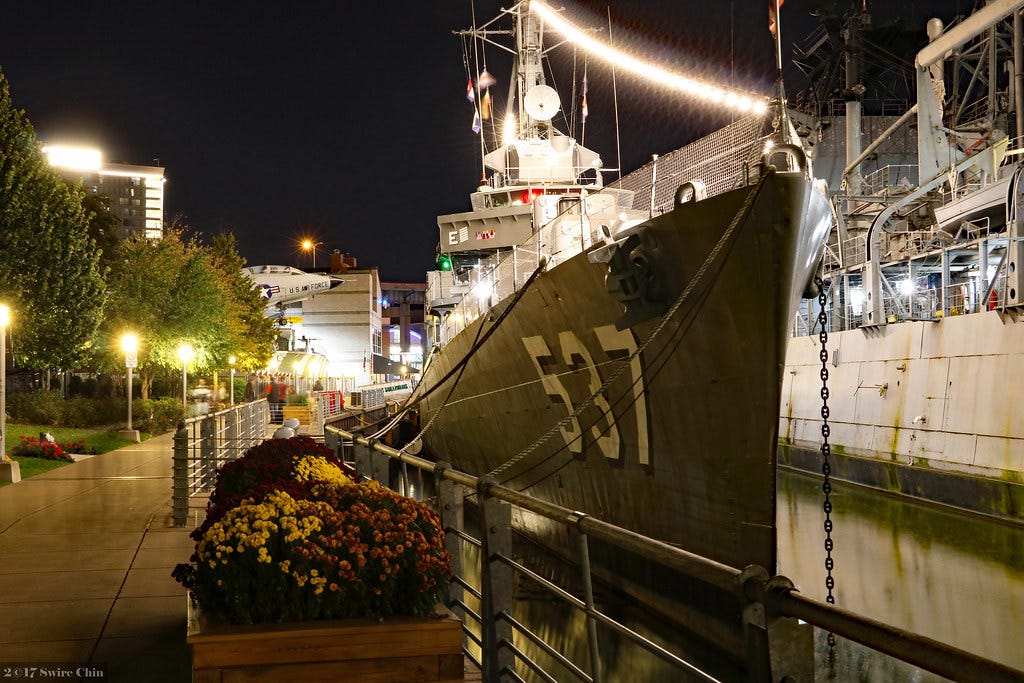
The Anatomy of a Naval Haunting
To understand the haunting of the USS The Sullivans, you have to grasp the sheer consistency of the reports. This isn’t just a collection of random ghost stories. It’s a decades-long pattern of specific phenomena that all seem to point back to one central, tragic figure.
The Restless Apparition
It all comes back to George. He’s the one constant in 50 years of reports, the figure at the absolute center of the mystery. Most often, he’s a shadow. A dark shape seen moving down the ship’s endless steel corridors, walking with the quiet purpose of a sailor on watch. But sometimes, the mask drops. The encounters become terrifyingly clear. Witnesses have given incredibly specific descriptions of a full-bodied sailor who appears “bloodied and burned” or has a “mangled face.” This isn’t a monster, though. Every account frames him as a figure of profound sorrow, a man “racked with guilt” and trapped in an endless loop - forever searching the decks for the brothers he couldn’t save.
A Phantom Crew at Work
But George isn’t the only presence on that ship. The whole vessel seems to have a pulse. The sounds alone are enough to unnerve the most seasoned investigators. Disembodied screams are reported to come from the Mess Hall. Heavy, steel hatches are heard - and sometimes seen - slamming shut with violent force in sections of the ship known to be completely deserted.
Then there’s the electrical chaos. Old, dead equipment sputters to life. Radios, long silent, will suddenly begin broadcasting static. The most incredible report? A radar panel in the Combat Information Center was found glowing with light during a total, park-wide power outage. How do you even begin to explain that? And sometimes, it’s not just lights and sounds. The activity gets physical. The stories go all the way back to the ship’s time in mothballs in Philadelphia, where one maintenance worker claimed an unseen force literally snatched a toolbox out of his hands. It’s a spectrum of phenomena, from a fleeting shadow to a tangible force, that makes this one of the most compelling and active naval hauntings on record.
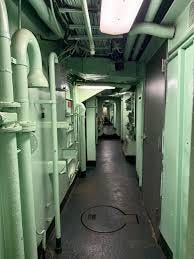
The Genesis of the Ghost Story
One of the most compelling facts of this case is when the hauntings began. The first reports of strange activity on the USS The Sullivans didn’t come from the chaos of World War II or the Korean War. They didn’t surface when the ship was teeming with a battle-ready crew. The phenomenon began only after the ship’s guns fell silent.
From Mothballs to Museum
After a decorated career, the destroyer was decommissioned on January 7, 1965, and towed to the Philadelphia Naval Shipyard to be placed in the reserve fleet. It was here, in the quiet of the late 1960s, that the first paranormal accounts surfaced. The claims came from a small contingent of maintenance workers and an electrician’s mate assigned to the dormant vessel. They reported hearing inexplicable noises and seeing fleeting figures in WWII-era uniforms in the empty passageways. The accounts were incredibly specific. One worker insisted that a toolbox was pulled directly from his hands by an unseen force, while another claimed an invisible hand grabbed his ankle, tripping him on a ladder.
Buffalo’s Hometown Haunt
The ship was given a new mission in 1977 when it was donated to become a museum in Buffalo, New York. While some reports suggest the activity subsided during the move, it re-emerged as the public began to explore its decks. New stories from museum staff, volunteers, and visitors started to build, reinforcing the ship’s growing reputation. By the 1990s and 2000s, the USS The Sullivans was a staple of local ghost tours and media features, cementing its status as one of Western New York’s primary haunted locations.
The National Spotlight
The haunting’s profile escalated dramatically in the 21st century, largely due to national media exposure. On January 22, 2014, the SyFy channel’s popular series Ghost Hunters featured the ship in an episode titled “Phantom Fleet.” The broadcast brought the ship’s regional ghost stories to a massive, international audience. The investigators captured a key piece of evidence: a heavy steel deck hatch was filmed as it slammed shut, apparently on its own. This moment provided powerful, visual corroboration for the decades of auditory reports about slamming doors, transforming a local legend into a nationally recognized case file of paranormal proportions.

The History Behind the Haunting
Every ghost story has an origin point. It’s a moment in time where the mundane world cracks and something else bleeds through. For the USS The Sullivans, the point isn’t a single event - it’s the brutal, compounded tragedy of five brothers from Waterloo, Iowa. Their story is the engine that drives this entire haunting.
The Fighting Sullivans
In their hometown, they were simply known as the Sullivan boys: George, Frank, Joe, Matt, and Al. They were inseparable. The later wartime propaganda would paint them as wholesome, all-American heroes, but the reality was a bit grittier. They were tough, working-class young men, fiercely loyal to one another and never ones to back down from a fight. When the news of Pearl Harbor broke, they learned a close friend, Bill Ball, had been killed aboard the USS Arizona. For them, the path forward was obvious.
On January 3, 1942, they all enlisted in the Navy with a single, unbreakable condition: they had to serve together. Despite a Navy policy that discouraged the practice, the brothers were insistent. “We will make a team together that can’t be beaten,” George promised in a letter to the Navy Department. The request was, fatefully, granted. All five were assigned to the new light cruiser, the USS Juneau.
Tragedy at Guadalcanal
The end came on Friday, November 13, 1942. During a ferocious naval battle near Guadalcanal, the Juneau was hit by a Japanese torpedo. The ship was heavily damaged but still afloat. As the crippled cruiser tried to withdraw, a second torpedo from an enemy submarine struck its ammunition magazine. The explosion was instantaneous and catastrophic. The Juneau was torn apart and vanished beneath the waves in less than a minute.
What followed was somehow even worse. Around 100 of the nearly 700-man crew survived the initial blast, including the eldest brother, George. In the open ocean, the survivors battled dehydration, exposure, shark attacks, and their own grievous wounds. George Sullivan, having just watched his four brothers die, clung to a life raft for days. Wracked with unimaginable grief and suffering from delirium, he eventually went over the side, reportedly convinced he could swim to a nearby island and find them. He was never seen again. In the end, only 10 men survived the sinking of the Juneau.
A Memorial in Action (DD-537)
The story of the five brothers became a national symbol of sacrifice and heroism. In response, President Franklin D. Roosevelt ordered a new Fletcher-class destroyer to be named in their honor - the first US warship ever named for more than one person. Their mother, Alleta, christened the vessel, and it was given the family’s simple motto as its own: “We Stick Together.”
The USS The Sullivans went on to have a remarkable career, serving through WWII, the Korean War, and the Cuban Missile Crisis and earning 11 battle stars. But here is the strangest fact in its storied history: in all its years of intense combat, the ship never lost a single crewman to enemy action. Not one. Its life of service ended in 1965, but its story continued. In a dramatic turn of events in April 2022, the aging museum ship suffered a major hull breach. It partially sank at its mooring before a frantic effort from the community saved it from being lost forever.
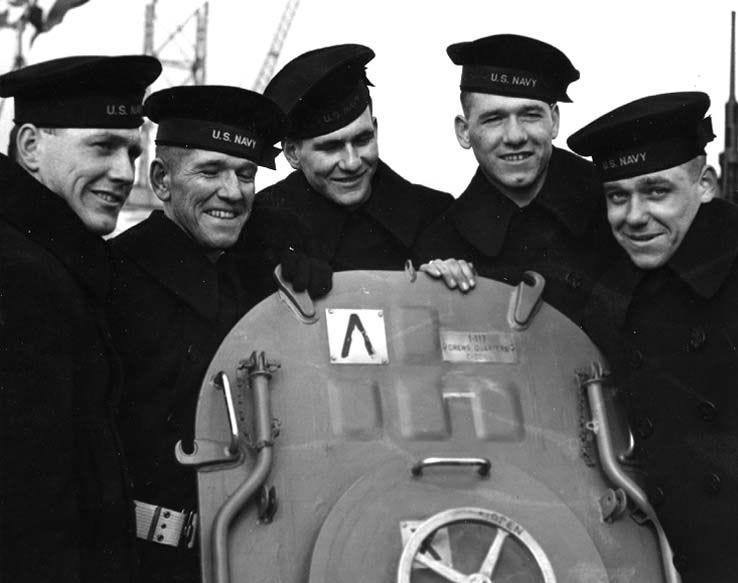
Modern Encounters & The Prospective Spirit
A good haunting doesn’t just stagnate; it evolves. It weaves itself into the present. Decades after the first strange reports surfaced in that quiet Philadelphia shipyard, the USS The Sullivans remains a hotbed of paranormal activity. But the story has also developed a fascinating and entirely different dimension.
Echoes in the 21st Century
The core phenomena haven’t faded with time. Modern paranormal investigation teams and museum staff continue to document the same experiences that have defined the haunting for half a century. The shadow figures still walk the corridors. The disembodied screams are still heard in the Mess Hall. The electronics still act up in ways that defy easy explanation. But new layers have been added to the lore, particularly when it comes to capturing evidence. One of the most persistent modern claims involves the memorial portrait of the five brothers displayed on the ship. Time and again, visitors and investigators have taken photographs of the portrait only to find that George’s face is inexplicably blurred, obscured by a strange light, or otherwise distorted, while his brothers remain perfectly clear.
Guardians of the Fleet?
Running parallel to the tragic story of George’s lonely ghost is another, more benevolent belief system. It’s a narrative of protection, not sorrow. It began with the crew of the original destroyer. They were the ones who had to sail the ship through some of the most brutal naval combat of the 20th century. And yet, the ship survived it all, earning 11 battle stars without a single crew member ever being killed by enemy action. Not one. How does a ship build a record like that? For some who served on her, the answer wasn’t skill or luck. It was the Sullivan brothers, acting as guardian angels.
This belief in a “Protective Spirit” might have faded into history if not for an incredible event in the year 2000. On January 3, Al-Qaeda terrorists in the port of Aden, Yemen, attempted to carry out a suicide attack on a US warship. Their target was the brand new destroyer, the modern namesake of the original: USS The Sullivans (DDG-68). They loaded a small boat with explosives and set out to ram the destroyer. But their boat was so overloaded, it sank before it could ever reach its target. For many, this was no accident. It was seen as the ultimate proof that the Sullivan brothers are still on duty, protecting not just a museum piece, but any vessel that carries their name and their legacy.
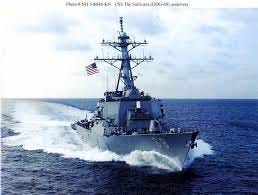
Investigating the Mundane
So we have the witness accounts. We have the powerful, tragic history. The connection between the story of the Sullivan brothers and the phenomena reported on the ship is undeniable. But is that connection paranormal? Or is there something else at play? A thorough investigator has to ask the hard questions and explore every possibility, no matter how mundane they might seem.
Hypothesis 1: The Power of Suggestion
Before anyone even steps foot on the ship, they know its story. It’s not just a retired warship; it’s a memorial, a floating tombstone imbued with one of the most tragic stories of World War II. That knowledge is powerful. It creates a state of heightened suggestibility. When we expect to experience something strange, our brains are far more likely to interpret ambiguous sights and sounds as paranormal. This is known as confirmation bias. The human brain is also hardwired for pareidolia - the tendency to see meaningful patterns, like faces or human figures, in random visual data. In the ship’s labyrinth of dimly lit corridors, packed with complex machinery and shifting shadows, the mind has an endless supply of ambiguous shapes to work with. Could the “shadow figure” be a product of a primed imagination in a perfect environment?
Hypothesis 2: The Symphony of Steel
What if the ship itself is the primary source of the phenomena? A massive, aging steel vessel floating on water is never truly silent or still. It’s in a constant state of flux. The metal hull expands and contracts with temperature changes. The ship groans and creaks as it moves with the currents of the Buffalo River. Wind whistling through its superstructure can create a symphony of bangs, pings, and moans that can easily be mistaken for footsteps, voices, or slamming doors.
There’s also the science of infrasound to consider. This is a low-frequency sound (below 20 Hz) that is inaudible to the human ear but can be felt as a physical vibration. Scientific studies have linked exposure to infrasound to the exact feelings people report during ghostly encounters: unease, dread, pressure on the chest, and even the sense of a “presence.” A vast, metallic structure like a destroyer, with its large, resonant compartments, is a perfect environment for generating these exact frequencies.
Hypothesis 3: The Ghost in the Old Machine
The ship’s electrical system is over 80 years old. The idea that decaying, unshielded wiring could cause lights to flicker or old equipment to malfunction is far more plausible than a spiritual intervention. This old wiring can also create high Electromagnetic Fields (EMF), which some researchers hypothesize can directly affect the brain’s temporal lobe, potentially causing hallucinations or feelings of paranoia.
So what about the most famous pieces of evidence? The claim that George’s face is always obscured in photos was examined by a local analyst, who concluded the effect was easily replicable and likely caused by nothing more than the glare of a camera’s flash on the glass frame. And the famous “slamming hatch” from Ghost Hunters? A sudden gust of wind, creating a dramatic change in air pressure within the ship’s corridors, could provide more than enough force to slam it shut. Or, it could simply be a case of mechanical failure on a worn, decades-old latch. While these explanations don’t feel as compelling as a ghost, they’re physically possible.
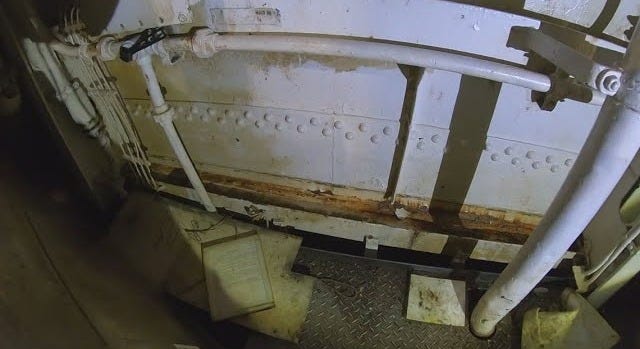
A Conduit for Grief
So, where does the investigation leave us? On one hand, there’s a compelling case to be made for the mundane. Infrasound, confirmation bias, pareidolia, 80-year-old wiring - these are powerful, rational explanations for much of the phenomena reported on the USS The Sullivans. It’s a clean, logical argument for a haunting that exists only in our minds and in the natural groans of an aging warship.
And yet, it feels incomplete. These clinical explanations don’t fully grapple with the sheer consistency of the reports, which stretch across five decades and hundreds of witnesses. They don’t quite touch the unnerving specificity of the core apparition: the “bloodied, burned” sailor, a figure witnesses have independently identified as George Sullivan.
The USS The Sullivans was never just a ship. From the moment it was named, it was a memorial. Christened by a grieving mother and given her family’s motto, it was consecrated as a symbol of their sacrifice. Perhaps that act transformed the vessel into something more - a conduit, a beacon for the very spirits it was built to honor. Or maybe the haunting is the story itself. The tale of the five Sullivan brothers is a profound national tragedy, and perhaps the ship is simply a resonator, a steel chamber where that powerful, collective memory echoes back at us in its dark corridors.
The truth, as it so often does, likely lies somewhere in the gray space between history and horror, between memory and metaphysics. The one thing that’s certain is that on the quiet waters of the Buffalo River, the story of the five Sullivan brothers is far from over.
What do you think is happening on this historic warship? The investigation continues in the comments, but that's a conversation for our paid subscribers. Upgrade your subscription to join the debate and support more deep dives like this one.
And if you found this case as fascinating as I did, sharing it is the best way to help us grow.
References
Blanke, O., et al. (2006). The 'feeling of presence' and vestibular-cortical dysfunction. Cortex, 42(5), 656-658.
Brinkley, D. (2018, May 24). Saving Private Ryan: The Real-Life D-Day Mission That Inspired the Steven Spielberg Film. HISTORY.com. https://www.history.com/news/saving-private-ryan-real-life-d-day-story-niland-brothers
Buffalo and Erie County Naval & Military Park. (n.d.). USS The Sullivans DD-537. Retrieved September 3, 2025, from https://buffalonavalpark.org/exhibits/uss-the-sullivans/
Buffalo History Tours. (2019, October 12). On the Tour: The Story of George. https://buffalohistorytours.com/blog/on-the-tour-the-story-of-george/
Confino, A. (1997). The mechanics of memory: How national trauma is memorialized. History and Memory, 11(1), 5-32.
Erie Enigmas. (2021, October 15). The Psychic's View: A Walkthrough of the USS The Sullivans [Video]. YouTube.
Ghostwalks.com. (2024, February 20). The Sullivans destroyer | Ghosts of Buffalo Naval Park. https://ghostwalks.com/articles/sullivans-destroyer-buffalo-naval-park
HauntedUS.com. (n.d.). USS The Sullivans haunted by 5 namesake brothers. Retrieved September 3, 2025, from https://hauntedus.com/new-york/uss-the-sullivans/
Holloway, M. (2013, October 23). American ghost stories: Haunted destroyer - The five Sullivan brothers. If I Only Had a Time Machine. https://mholloway63.wordpress.com/2013/10/23/american-ghost-stories-haunted-destroyer-the-five-sullivan-brothers/
Jones, D. E. (2004). Maritime superstitions: A psychological anthropology perspective. University of Central Florida Press.
Kurzman, D. (2008). The Sullivans: An Iowa family remembered. Bloomsbury Publishing.
Loftus, E. F. (2008). Mistaken identity: The psychology of eyewitness testimony in low-light, high-stress environments. Journal of Applied Cognitive Psychology, 21(4), 505-521.
The Lockport Union-Sun & Journal. (1985, October 28). Port of call for phantoms?
National Park Service. (n.d.). (H)our history lesson: The Sullivan Brothers' legacy and impact on the home front in Waterloo, Iowa, World War II Heritage City. Retrieved September 3, 2025, from https://www.nps.gov/articles/h-our-history-lesson-the-sullivan-brothers-legacy-and-impact-on-the-home-front-in-waterloo-iowa-world-war-ii-heritage-city.htm
Naval History and Heritage Command. (n.d.). The Sullivan brothers. Retrieved September 3, 2025, from https://www.history.navy.mil/our-collections/photography/us-people/s/sullivan-brothers.html
Nikon Corporation. (2010). Debunking 'ghost orb' photography (Technical Bulletin A-445).
O'Keeffe, C. (2005). Confirmation bias in thematic environments: A study of paranormal belief in historic locations. Journal of Parapsychology, 69(2), 279-294.
Reilly, J. C., Jr. (1983). Fletcher-class in action. Naval Institute Press.
Skeptical Inquirer. (2015, January 10). Analysis of TAPS' 'slamming hatch' evidence on the USS The Sullivans.
University at Buffalo Archives. (n.d.). Voices from the decks: An oral history project of Buffalo Naval Park volunteers (Special Collection B-88-14).
The Waterloo Courier. (1943, October 1). Our boys' ship is ready.
Western New York Paranormal Research Society. (2004). Case file 04-117: USS The Sullivans.
WGRZ-TV. (2018, October 29). Most Buffalo: The full interview with Naval Park director [Video]. YouTube.
Winfield, M. (2006). Shadows in the steel: An oral history of the Buffalo Naval Park hauntings. Western New York Wares.

